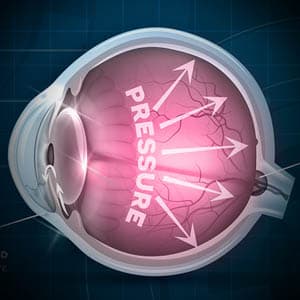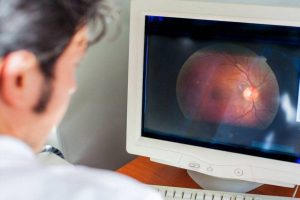Did you know about 3 million people in the U.S. are affected by glaucoma, but only half are aware they have it?
Over 90% of people with glaucoma have open-angle glaucoma (OAG), which has no obvious symptoms until it causes irreversible damage.
Glaucoma is one of the leading causes of preventable vision loss and blindness.
By the time obvious symptoms appear, a person has already already suffered irreversible vision loss.
Glaucoma is a group of progressive eye diseases caused by increased pressure in the eye that damages the optic nerve. It is one of the leading causes of preventable vision loss and blindness.
Schedule an eye exam with an eye doctor near you who can diagnose and manage your glaucoma.
SEE RELATED: How Is Glaucoma Treated?
What are the first signs and symptoms of glaucoma?
The different types of glaucoma present themselves in very different ways. Sometimes there are no symptoms at all.
-
Open-angle glaucoma (OAG)
When fluid inside the eye does not properly drain out of the eye, the volume of fluid and pressure inside the eye increase, causing permanent and damage to the optic nerve.
This type of glaucoma unfolds gradually and painlessly, without apparent symptoms, until vision loss reveals severe damage to the optic nerve. This is the reason why more than 50% of people with OAG suffer permanent vision loss.
Regular comprehensive eye exams are crucial, as there are often no obvious signs of glaucoma, until its too late.
When the eye’s drainage channel is blocked by the iris, it causes eye pressure to increase very quickly. This is known as acute angle-closure glaucoma, also called narrow-angle glaucoma and closed-angle glaucoma.
If not treated immediately, the sudden surge in eye pressure can damage the optic nerve and cause permanent vision loss.
If you or your loved one experience any of the following signs or symptoms, contact an eye doctor immediately.
- Sudden pain in the head and eye
- Blurred vision that occurs suddenly
- An eye that looks hazy, with a cloudy looking cornea
- Sudden headache around the forehead or eyes
- Vomiting and nausea accompanied by severe eye pain
- Tunnel vision, vision loss around the edges of your visual field
- Redness in the eye, sometimes accompanied by pain
- Vision loss, especially if it happens suddenly
- Seeing halos around lights
Diagnosing Glaucoma
Through regular eye exams an eye doctor can detect glaucoma early and will be able to start treatment to stop or slow it’s progression.
During the exam your eye doctor will dilate your pupils to measure your intraocular pressure (IOP) and examine the condition of your optic nerve to make sure your levels are in the normal range. If your pressure levels are too high, your eye doctor will assess whether you have glaucoma. Diagnosing glaucoma early can help prevent vision loss.
A visual field test checks your peripheral vision to determine if the optic nerve is functioning correctly.
An eye doctor will most likely use the latest imaging technologies, such as a digital retinal image (DRI) or an OCT scan.
The DRI provides a photograph of the optic nerve and retina, and the OCT scan analyzes the layers of the retina and optic nerve. Both of these technologies allow the eye doctor to discover the first signs of eye disease and provide treatment that might just save your vision.
LEARN MORE: Guide to Eye Conditions
If you suspect that you may have glaucoma contact an eye doctor near you to schedule an appointment.










